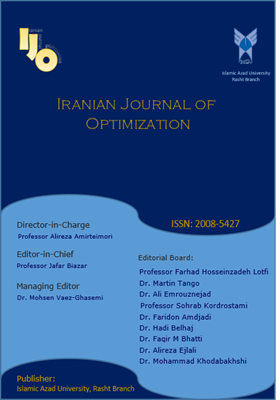-
-
List of Articles
-
Open Access Article
1 - A statistical test for outlier identification in data envelopment analysis
Morteza Khodabin Reza Kazemi Matin -
Open Access Article
2 - Obtaining a Unique Solution for the Cross Efficiency by Using the Lexicographic method
G. R. Jahanshahloo R. Fallahnejad -
Open Access Article
3 - Linear Programming, the Simplex Algorithm and Simple Polytopes
Das Bhusan Biswal Bagaban J.P Tripathy -
Open Access Article
4 - A new method for ordering triangular fuzzy numbers
S. H. Nasseri S. Mizuno
-
The rights to this website are owned by the Raimag Press Management System.
Copyright © 2021-2025







